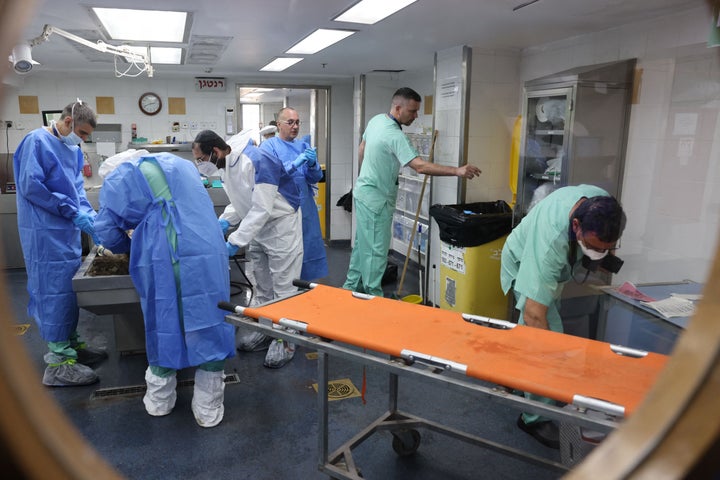Our love for carbohydrates may be deeply rooted in our ancient DNA, according to a groundbreaking study published in the journal Science. The research, led by the University at Buffalo and the Jackson Laboratory, reveals that our ability to digest starchy foods efficiently could predate not only agriculture but possibly even our split from Neanderthals.
Summary: New research suggests the gene for starch-digesting enzymes in saliva may have first duplicated over 800,000 years ago, long before agriculture, shaping our modern appetite for carbohydrates.
Estimated reading time: 5 minutes
The Salivary Amylase Gene: A Key Player in Carb Digestion
At the heart of this discovery is the salivary amylase gene (AMY1), which produces an enzyme that begins breaking down complex carbohydrates in our mouths. While it’s been known that humans carry multiple copies of this gene, understanding its evolution has been challenging.
Omer Gokcumen, PhD, professor in the Department of Biological Sciences at the University of Buffalo and the study’s corresponding author, explains the significance of AMY1:
“The idea is that the more amylase genes you have, the more amylase you can produce and the more starch you can digest effectively.”
Breakthrough in Genetic Analysis
The research team employed advanced techniques like optical genome mapping and long-read sequencing to overcome previous limitations in studying the AMY1 gene region. This methodological breakthrough allowed for a more precise mapping of the gene’s evolution.
Charles Lee, professor and Robert Alvine Family Endowed Chair at the Jackson Laboratory, co-led the study. The team’s analysis of 68 ancient human genomes, including a 45,000-year-old sample from Siberia, yielded surprising results.
Ancient Humans and Neanderthals: Already Carb-Ready?
The study revealed that pre-agricultural hunter-gatherers already possessed multiple AMY1 copies, ranging from four to eight per diploid cell. This finding suggests that humans were genetically prepared for starch digestion long before the advent of farming.
Even more intriguingly, the research found evidence of AMY1 gene duplications in Neanderthals and Denisovans. Kwondo Kim, a lead author from the Lee Lab at JAX, states:
“This suggests that the AMY1 gene may have first duplicated more than 800,000 years ago, well before humans split from Neanderthals and much further back than previously thought.”
The Ripple Effect of Genetic Duplication
The initial duplication of AMY1 set the stage for significant genetic variation, allowing humans to adapt to changing diets as starch consumption increased with technological and lifestyle changes.
Charikleia Karageorgiou, a lead author from the University of Buffalo, describes this process:
“Following the initial duplication, leading to three AMY1 copies in a cell, the amylase locus became unstable and began creating new variations. From three AMY1 copies, you can get all the way up to nine copies, or even go back to one copy per haploid cell.”
Agriculture’s Impact on AMY1 Variation
The study also highlights how the advent of agriculture further influenced AMY1 variation. European farmers saw a surge in the average number of AMY1 copies over the past 4,000 years, likely due to their starch-rich diets.
Gokcumen notes that this trend extended beyond humans:
“Individuals with higher AMY1 copy numbers were likely digesting starch more efficiently and having more offspring. Their lineages ultimately fared better over a long evolutionary timeframe than those with lower copy numbers, propagating the number of the AMY1 copies.”
Future Implications and Research Directions
The findings open up exciting avenues for future research. Feyza Yilmaz, an associate computational scientist at JAX and lead author, suggests:
“Given the key role of AMY1 copy number variation in human evolution, this genetic variation presents an exciting opportunity to explore its impact on metabolic health and uncover the mechanisms involved in starch digestion and glucose metabolism.”
As we continue to unravel the complexities of our genetic history, studies like this not only shed light on our evolutionary past but also provide valuable insights into our current dietary preferences and potential health implications.
Quiz: Test Your Knowledge on AMY1 and Human Evolution
- When did the AMY1 gene potentially first duplicate? a) 12,000 years ago b) 45,000 years ago c) More than 800,000 years ago d) With the advent of agriculture
- What is the primary function of the enzyme produced by the AMY1 gene? a) Digesting proteins b) Breaking down fats c) Breaking down complex carbohydrates d) Producing insulin
- How did the number of AMY1 copies change in European farmers over the past 4,000 years? a) Decreased significantly b) Remained constant c) Increased on average d) Completely disappeared
Answer Key:
- c) More than 800,000 years ago
- c) Breaking down complex carbohydrates
- c) Increased on average
Glossary of Terms
- Salivary amylase gene (AMY1): A gene responsible for producing enzymes that begin breaking down starches in the mouth.
- Optical genome mapping: A technique used to visualize and analyze large-scale genomic structures.
- Long-read sequencing: A DNA sequencing method that can read longer stretches of DNA, providing more accurate results for complex genetic regions.
- Diploid cell: A cell containing two sets of chromosomes, one from each parent.
- Haploid cell: A cell containing only one set of chromosomes.
- Amylase locus: The specific location of the amylase gene on a chromosome.
Enjoy this story? Get our newsletter! https://scienceblog.substack.com/

























































